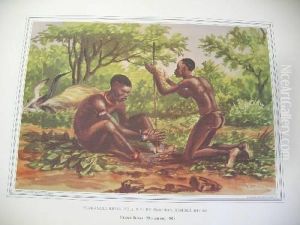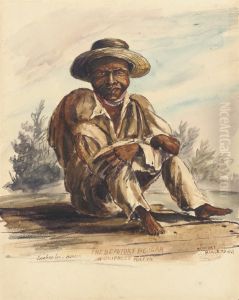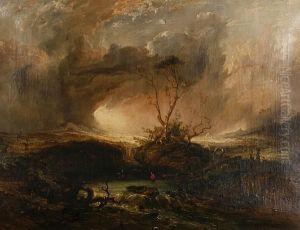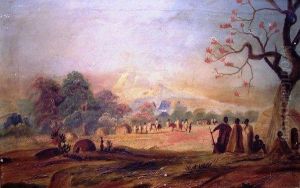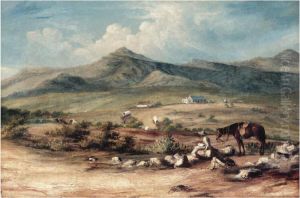Thomas John Baines Paintings
Thomas John Baines, born on November 27, 1820, in King's Lynn, Norfolk, England, was a notable English artist and explorer of the 19th century, renowned for his detailed and vivid landscapes, ethnographic studies, and wildlife illustrations, particularly of Southern Africa. His work provides a valuable historical record of the regions he explored, capturing the essence of colonial-era Africa with a focus on its landscapes, peoples, and burgeoning European exploration.
Baines was largely self-taught as an artist, developing his skills through practice and observation rather than formal education. His artistic career began in earnest when he was employed as a scenic artist in London, but the lure of adventure and exploration soon drew him towards the African continent. In 1842, he moved to South Africa, where he joined several expeditions and began to document the landscapes and cultures he encountered. One of his most significant contributions was as the official artist for David Livingstone’s Zambezi Expedition (1858-1864), which aimed to explore the Zambezi River and assess its navigability. However, due to disagreements and the challenging nature of the expedition, Baines was dismissed from the party in 1859.
Despite this setback, Baines continued to explore and document Africa on his own and with other expeditions. His travels took him through what is now South Africa, Namibia, Botswana, Zimbabwe, and Zambia. He was among the first Europeans to witness the Victoria Falls, and his paintings of the falls are among the earliest known depictions by a European artist. Baines’s work was not limited to landscapes; he also painted portraits of indigenous peoples, scenes of everyday life, and detailed illustrations of flora and fauna, contributing significantly to the European understanding of Southern African geography and ethnography.
Baines's contributions were not limited to his artwork. He also wrote extensively about his travels, publishing several books and articles that detailed his journeys and observations. His writings, combined with his paintings and sketches, offer a comprehensive and immersive view of 19th-century Southern Africa from a European perspective.
Thomas Baines died on May 8, 1875, in Durban, Natal Colony (now South Africa) from dysentery. While he may not have achieved the same level of fame as some of his contemporaries during his lifetime, his work has gained recognition over time for its historical and artistic value. Today, Baines is celebrated for his contributions to the exploration and documentation of Africa, with his art and writings serving as a valuable resource for understanding the continent’s past.
